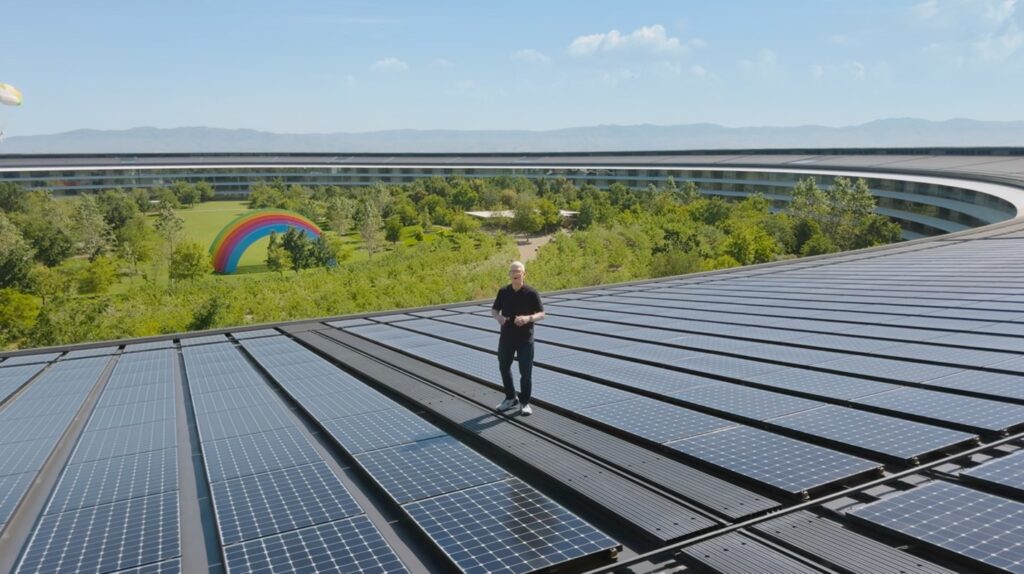Sometimes, it’s all about the packaging. You can have the most useful, cutting-edge offerings, but if your presentation fails to captivate audience attention, most likely your technology will fail to excite them too. We are a visual society, one that is used to being entertained. At this dawn of generative AI, we are being bombarded with acronyms, numbers, and a lot of words that are confusing and hold little to no meaning for many. After enduring hour-long (or more) keynote presentations by monotone-speaking executives on a boring, colorless stage, it’s difficult to instill excitement in your audience—no matter how exciting your message or tech may be. These companies and their executive teams could take a lesson from Apple’s playbook, which Apple followed closely during its recent WWDC. The presenters had excitement in their voice, the backgrounds were dazzling, and perhaps best of all, Apple focused on applications that everyone can, and surely will, use to make their life easier and better. Well done, Apple.

Often it feels like this is Apple’s world and we are just living in it.
Lately, we’ve sat through many media briefings, either online or in person, focused on that popular subject everyone seems consumed with nowadays (or at least in the eyes of tech firms)—AI. Only a few months ago, we were wrestling with definitions, and mostly still are, but that did not hinder the announcements and rollouts of AI software and hardware, including AI PCs. Yet, manufacturers have not missed a beat when pitching their products. Or have they?
AI PC and processor vendors have been taking to conference stages, talking about all things generative AI. For the most part, their presentations have lacked pizazz. Rather than showing people the cool things—things that affect us personally—that these things can do, they tell us what they can do. But, seeing is believing, and often those words fall flat.
To no one’s surprise, Apple’s AI announcements at WWDC stole the show. What was so different about its keynote presentations compared to the countless others in the previous months? It was just as much about what they were announcing as how they presented it. And, being Apple, they co-opted the term AI to stand for Apple Intelligence. Who can say AI now and not think Apple?
Apple has always excelled at showmanship. The company used to make a big showing at NAB in the late 2000s. Its giant booth was hard to miss, greeting conference-goers as they entered the huge South Hall. Even before the show floor opened, the company kicked things off amid a packed house at one of Las Vegas’ cavernous hotel halls. Years ago, I had described the previous annual event as a religious revival of sorts, as the audience constantly clapped and cheered while hanging on every word. Apple owned the room and had its largest industry competitors on the run—that is, until Apple suddenly decided to turn its attention away from the video market and focus on the personal device arena (to which Avid, Adobe, and others probably opened a bottle of champagne in celebration).
At WWDC, Apple’s flair was on full display. The conference is all about apps, and let’s face it, apps are (or at least can be) exciting. The keynote began with key company and product executives making their entrance by skydiving from a plane and later showed them taking turns outlining new technology in videos that you wanted to watch, from CEO Tim Cook talking about the new operating systems while perched on a rooftop at Apple Park, to Apple SVP of Software Engineering Craig Federighi performing parkour moves just before introducing the new macOS, Sequoia. They made all the OS updates sound exciting and significant—and many of them indeed are.

How much do visuals matter during presentations like this? A lot, especially to this generation of visual consumers. Coupled with “show me the application” moments, Apple left us believing we not only want this new technology, but we must have it—and have it from them. Some of the AI technology they introduced can be had from third parties—the new password app, call recording and transcription, iPhone mirroring on the Mac, and personalized maps, for example. Apparently, there’s even a term for this, “Sherlocking,” which describes when Apple presents a new feature that does what an existing third-party app already does. (Here again, it’s much more exciting and memorable when the tech comes from Apple—does anyone recall the companies with these original applications? Me either.)
From an all-new Siri, to creating unique emojis, to automatically changing the tone of an email before sending it, Apple’s GenAI capabilities are not just some fantastical uses that someone in some remote lab might use; these are things we now know we want—practical applications spun from technology that everyone can use every day. And Apple has made it easy for us to do so, embedding the tech into their various operating systems. Yup, technology made simple, what’s not to love?.
Apple has led us into its world of AI, and it’s a world filled not with dark shadows and overwhelming information and processes, but with virtual butterflies and unicorns emanating from our own Apple devices.
Apple, of course, is not the only company that has an impressive playbook when it comes to introducing technology. Nvidia and its CEO, Jensen Huang, are pros at addressing audiences. Adobe leaders David Wadhwani and Scott Belsky project great stage presence amid colorful presentations. There are others, of course, backed by very talented marketing teams.
However, it’s important to remember, the CEOs and executives who take the stage are business leaders, not actors or performers. But in those rare instances when a person has this dual talent, whether natural or honed over years, it is indeed a memorable thing. Perhaps along with an MBA, future business leaders should consider a few acting courses as well. It’s more likely, though, that AI now will enable them to give a performance of a lifetime.

Apple has always led in UI, and with the embodiment of AI, it will be even more seamless, personal, and, according to Apple, secure.